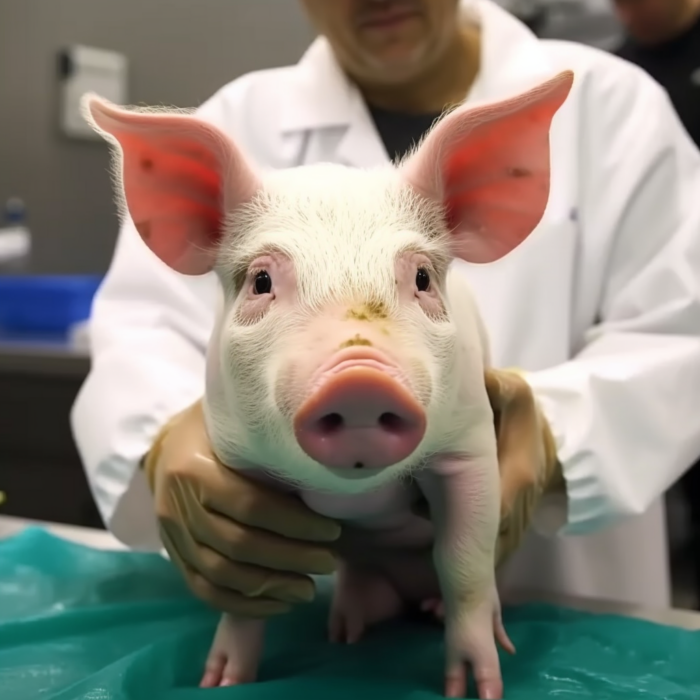Mar 25 2024
Man Gets Pig Kidney Transplant
 On March 16 surgeons transplanted a kidney taken from a pig into a human recipient, Rick Slayman. So far the transplant is a success, but of course the real test will be how well the kidney functions and for how long. This is the first time such a transplant has been done into a living donor – previous experimental pig transplants were done on brain dead patients.
On March 16 surgeons transplanted a kidney taken from a pig into a human recipient, Rick Slayman. So far the transplant is a success, but of course the real test will be how well the kidney functions and for how long. This is the first time such a transplant has been done into a living donor – previous experimental pig transplants were done on brain dead patients.
This approach to essentially “growing organs” for transplant into humans, in my opinion, has the most potential. There are currently over 100 thousand people on the US transplant waiting list, and many of them will die while waiting. There are not enough organs to go around. If we could somehow manufacture organs, especially ones that have a low risk of immune rejection, that would be a huge medical breakthrough. Currently there are several options.
One is to essentially construct a new organ. Attempts are already underway to 3D print organs from stem cells, which can be taken from the intended recipient. This requires a “scaffold” which is connective tissue taken from an organ where the cells have been stripped off. So you still need, for example, a donor heart. You then strip that heart of cells, 3D print new heart cells onto what’s left to create a new heart. This is tricky technology, and I am not confident it will even work.
Another option is to grow the organs ex-vivo – grow them in a tank of some kind from stem cells taken from the intended recipient. The advantage here is that the organ can potentially be a perfect new organ, entirely human, and with the genetics of the recipient, so no issues with rejection. The main limitation is that it takes time. Considering, however, that people often spend years on the transplant wait list, this could still be an option for some. The problem here is that we don’t currently have the technology to do this.
Similar to this approach is to grow a human organ inside an animal – essentially using the animal as the “tank” in which to grow the organ. The host animal can then provide nutrition and oxygen, and a suitable environment. This would require that the animal will not reject the organ, which would mean treating with drugs or engineering animals hosts that are humanized or whose immune systems cannot mount a rejection.
The most futuristic and also ethically complex approach would be to clone an entire person in order to use them as an organ donor. This would not have to be like “The Island” movie in which the cloned future donors were living people kept in a controlled environment, unaware of their ultimate fate. Anencephalic humans (without brains) could be cloned and grown, and just kept as meat bags. There are two big disadvantages here. The first is that the clones would likely need to be kept alive for years before the organs would be mature enough to be used. How would that work? Would a recipient need to wait 10 years before they could get their donor organ, or would there be clone banks where clones were kept in case they were needed in the future? These seem like cost-prohibitive options, except for the super wealthy.
One potential solution would be to genetically engineer universal donors, whose organs could potentially be transplanted into any human recipient. Or perhaps there would need to be a finite number of donors, say for each blood type. When someone needs an organ they get the next one off the rack. Still, this seems like an expensive option.
The other main limitation of the clone approach is the ethical considerations. I doubt keeping banks of living donor clones will be morally acceptable to society, at least not anytime soon.
This leaves us with what I think is by far the best option – genetically engineering animals to be human organ donors. Pigs are good candidates because the size and shape of their organs are a good match. We just need to engineer them so their immune systems use human proteins instead of pig proteins. We can remove any of the proteins that are most likely to trigger rejection. This also means giving the pigs a human immune system. The pigs are therefore both humanized and altered so as not to trigger rejection. Slayman will still need to take anti-rejection drugs, but it is easy to imagine that as this technology incrementally improves eventually we will get to a population of pigs optimized for human organ donation. The advantages of this approach over all other approaches are simply massive, which leads me to predict that this approach is the one that will win out for the foreseeable future.
One potential ethical objection is from raising domestic animals for the purpose of being slaughtered, which some animal rights activists object to. But of course, we already do this for food. At least for now, this is ethically acceptable to most people. Slaughtering a pig not just for food but to save the lives of potentially 5-7 people is not a hard sell ethically. This approach could also be a huge money saver for the healthcare system.
I am therefore very happy to see this technology proceed, and I wish the best for Slayman, both for him personally and for the potential of this technology to save many lives.






